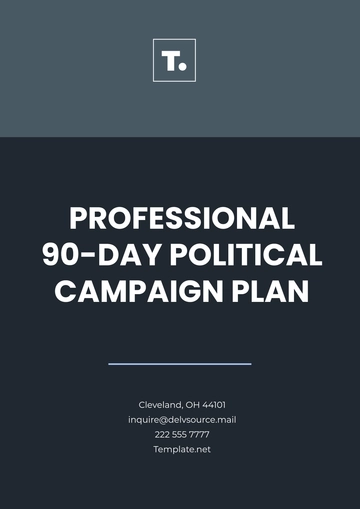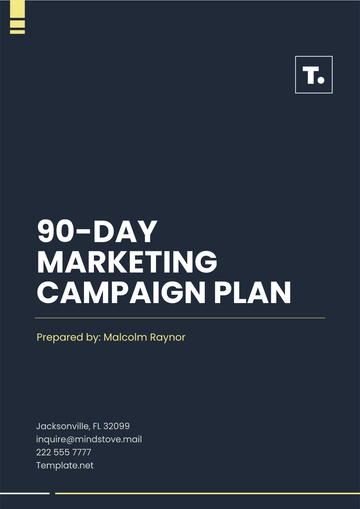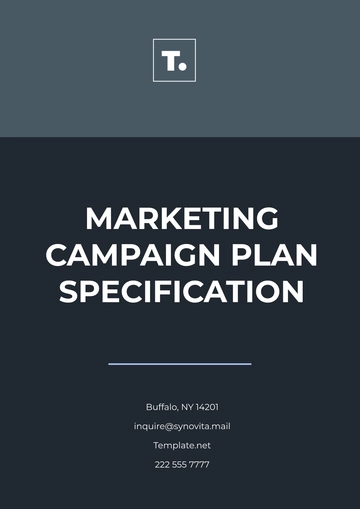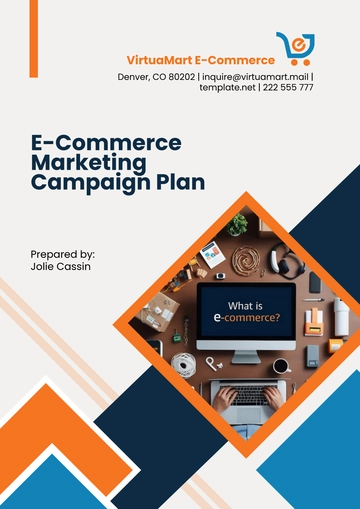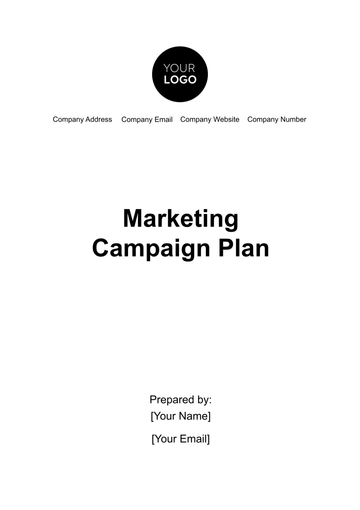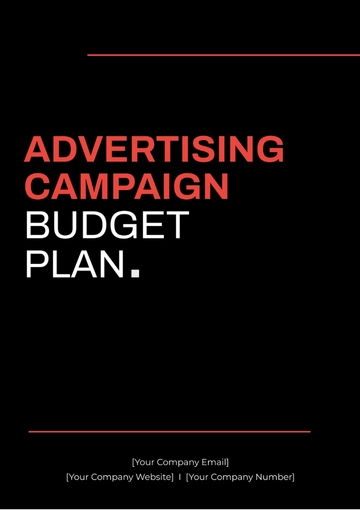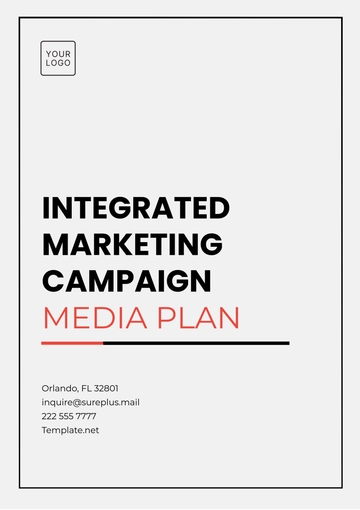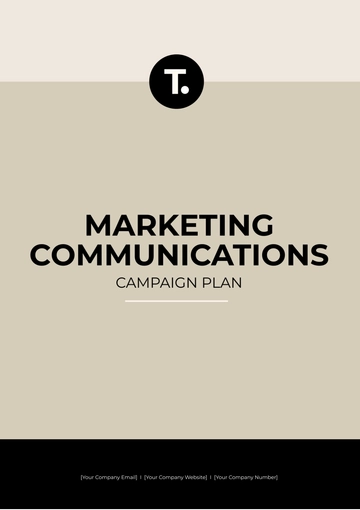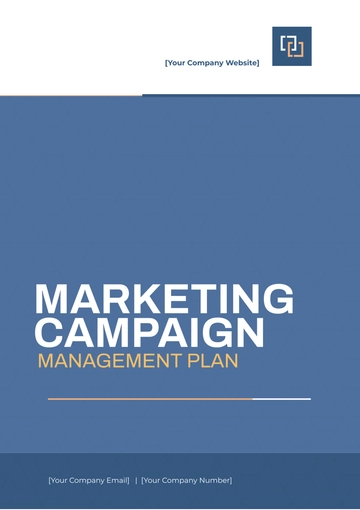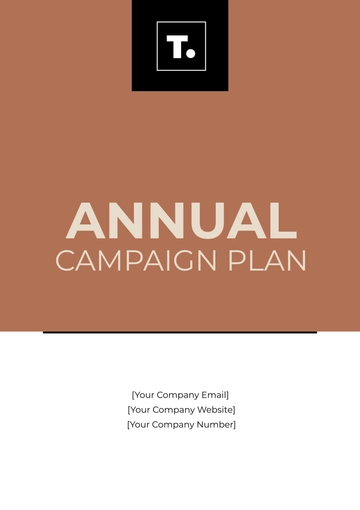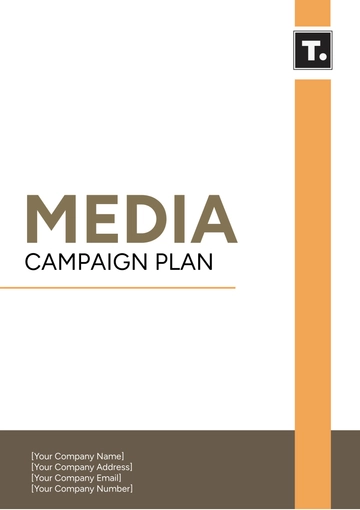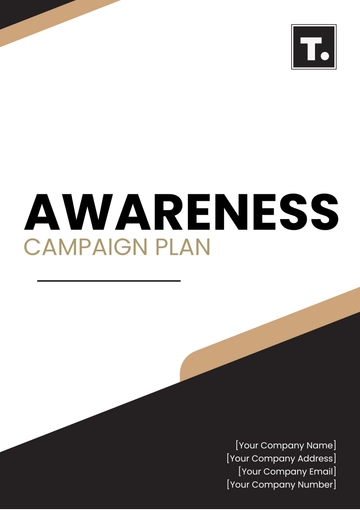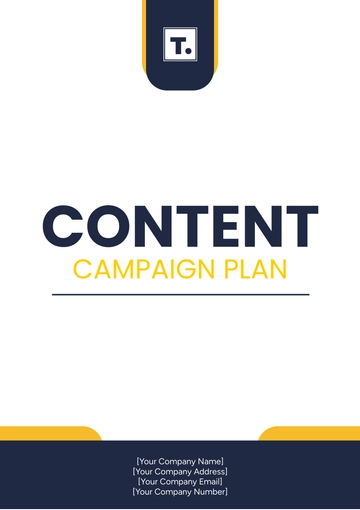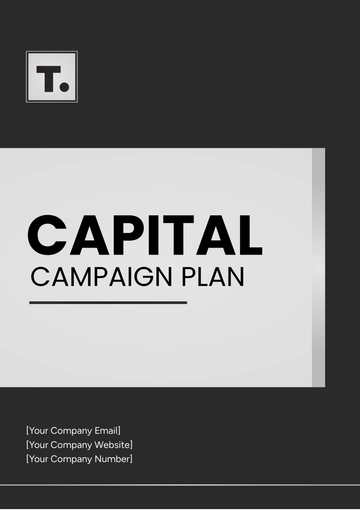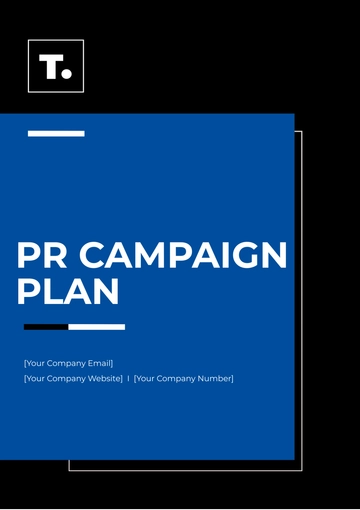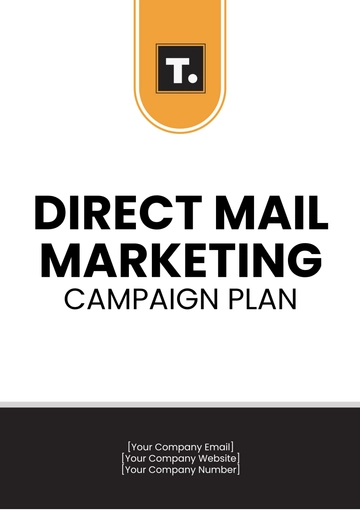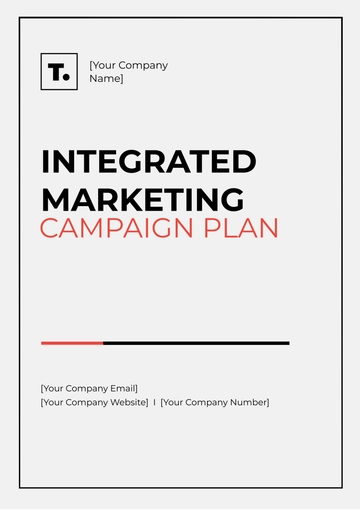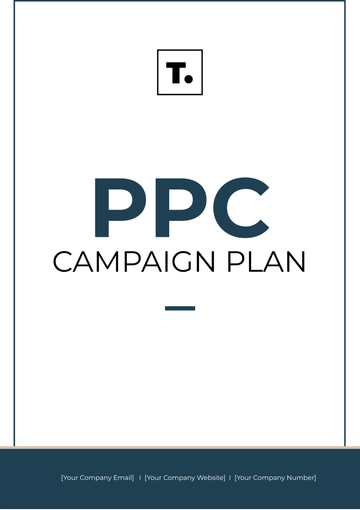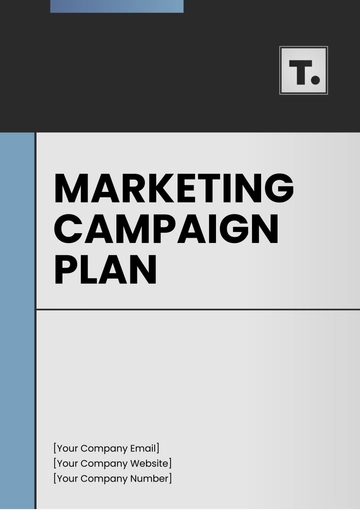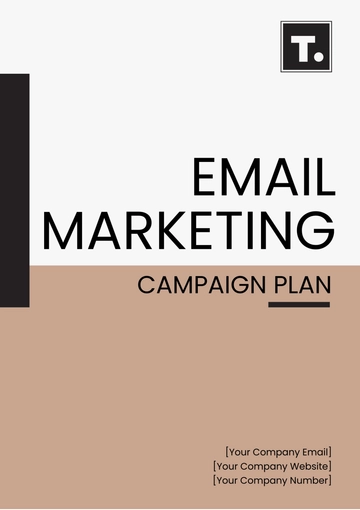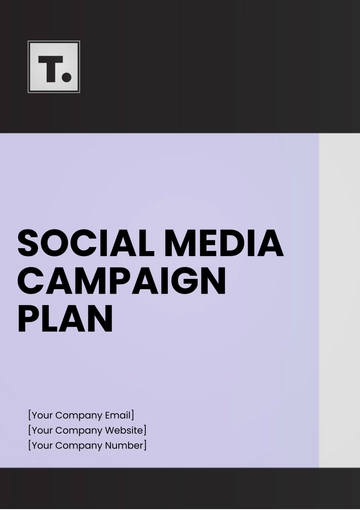Free Annual Campaign Plan
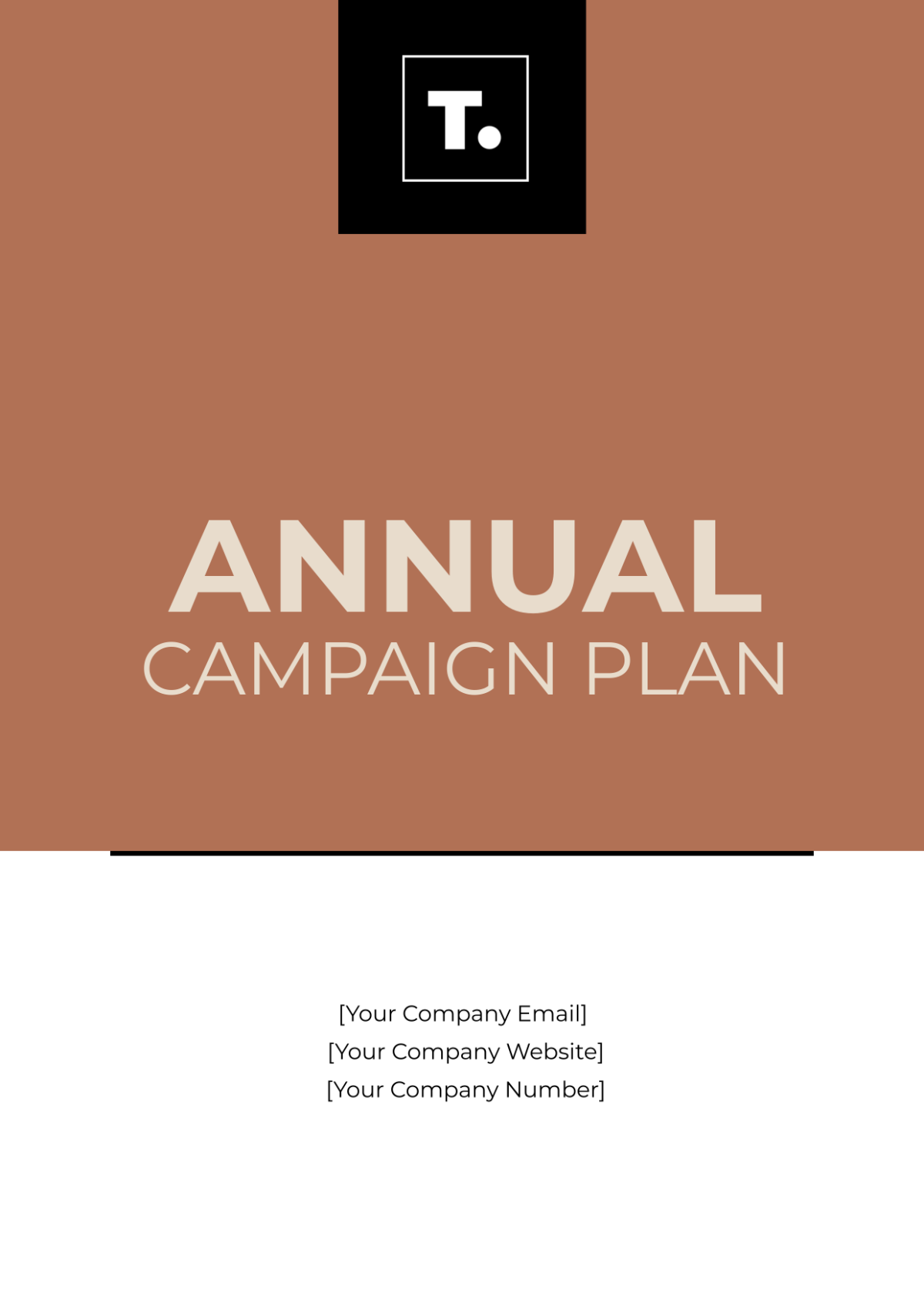
I. Executive Summary
Empower Education 2050 is a year-long campaign aimed at raising funds to provide quality education to underprivileged children in rural communities. Through targeted marketing efforts and strategic partnerships, the campaign seeks to increase awareness, engagement, and donations to support our mission of transforming lives through education.
II. Situation Analysis
SWOT Analysis:
Strengths | Weaknesses |
|---|---|
Established reputation in the education sector | Limited funding resources |
A dedicated team of volunteers | Lack of digital presence |
Strong community support | Competing priorities |
Opportunities | Threats |
|---|---|
Growing interest in social causes | Economic instability |
Potential for corporate partnerships | Donor fatigue |
Technological advancements in fundraising | Regulatory challenges |
III. Goals and Objectives
Raise $100,000 in funds for educational programs.
Increase brand awareness by 30% among the target audience.
Engage 500 new donors and retain 80% of existing donors.
Expand outreach to 10 new rural communities.
IV. Target Audience Analysis
A. Primary Audience
Demographics: Individuals aged 25-45, urban professionals, middle to high-income earners.
Psychographics: Value philanthropy, passionate about social causes, seek meaningful ways to make a difference.
Behavioral Characteristics: Engage with social media, attend charity events, willing to donate online.
B. Secondary Audience
Demographics: Corporations and businesses, educational institutions, community organizations.
Psychographics: Corporate social responsibility, commitment to education equity, seeking impactful partnerships.
Behavioral Characteristics: Interested in sponsorship opportunities, willing to participate in fundraising events.
V. Messaging and Positioning
Core Message: "Empower Education: Transforming Lives, One Child at a Time"
Value Proposition: "Join us in giving every child the opportunity to thrive through quality education."
Brand Positioning: Position our organization as a catalyst for positive change in education, emphasizing transparency, accountability, and impact.
VI. Strategy and Tactics
Digital Marketing
Launch social media campaigns highlighting success stories and impact.
Utilize email newsletters to engage donors and provide regular updates.
Corporate Partnerships
Identify and approach potential corporate sponsors for donation matching or employee engagement programs.
Offer tailored sponsorship packages highlighting social impact and brand visibility.
Community Events
Organize fundraising events such as charity galas, fun runs, and educational workshops.
Collaborate with local businesses and influencers to maximize outreach and participation.
Content Creation
Develop compelling storytelling content, including videos, blog posts, and infographics, to showcase our mission and programs.
Collaborate with media outlets and influencers to amplify our message and reach new audiences.
VII. Budget and Resources
Budget Category | Allocation |
|---|---|
Digital Marketing | $20,000 |
Corporate Partnerships | $10,000 |
Community Events | $15,000 |
Content Creation | $10,000 |
Staffing | Volunteer-based |
(Dedicated campaign coordinator with a $5,000 stipend) | |
Total Budget | $60,000 |
VIII. Measurement and Evaluation
KPIs
Total funds raised
Donor acquisition and retention rates
Brand awareness metrics (website traffic, social media engagement)
Number of new partnerships established
Community outreach and impact assessments
Methodologies
Regular tracking of donations and engagement metrics using CRM software.
Surveys and feedback forms to measure donor satisfaction and campaign effectiveness.
Monthly progress reports to stakeholders, with quarterly reviews to assess strategy performance and adjust tactics as needed.
IX. Risk Management
Economic Downturn: Diversify fundraising efforts and explore alternative revenue streams.
Donor Fatigue: Implement creative engagement strategies and ensure transparent communication about impact.
Regulatory Changes: Stay informed about relevant laws and regulations governing charitable organizations, and adapt policies accordingly.
X. Timeline
January-March: Campaign planning and strategy development
April-June: Launch of digital marketing campaigns and corporate partnership outreach
July-September: Community event organization and execution
October-December: Content creation and evaluation of campaign effectiveness
XI. Contact Details
Prepared by: [Your Name]
Position: [Your Position]
Contact Information: [Your Email] | [Your Company Number]
- 100% Customizable, free editor
- Access 1 Million+ Templates, photo’s & graphics
- Download or share as a template
- Click and replace photos, graphics, text, backgrounds
- Resize, crop, AI write & more
- Access advanced editor
An Annual Campaign Plan is a strategic document outlining the objectives, strategies, tactics, and resources required to execute a series of coordinated marketing or fundraising efforts over the course of a year. It typically includes a timeline, budget allocation, target audience analysis, messaging strategy, and evaluation metrics.
You may also like
- Finance Plan
- Construction Plan
- Sales Plan
- Development Plan
- Career Plan
- Budget Plan
- HR Plan
- Education Plan
- Transition Plan
- Work Plan
- Training Plan
- Communication Plan
- Operation Plan
- Health And Safety Plan
- Strategy Plan
- Professional Development Plan
- Advertising Plan
- Risk Management Plan
- Restaurant Plan
- School Plan
- Nursing Home Patient Care Plan
- Nursing Care Plan
- Plan Event
- Startup Plan
- Social Media Plan
- Staffing Plan
- Annual Plan
- Content Plan
- Payment Plan
- Implementation Plan
- Hotel Plan
- Workout Plan
- Accounting Plan
- Campaign Plan
- Essay Plan
- 30 60 90 Day Plan
- Research Plan
- Recruitment Plan
- 90 Day Plan
- Quarterly Plan
- Emergency Plan
- 5 Year Plan
- Gym Plan
- Personal Plan
- IT and Software Plan
- Treatment Plan
- Real Estate Plan
- Law Firm Plan
- Healthcare Plan
- Improvement Plan
- Media Plan
- 5 Year Business Plan
- Learning Plan
- Marketing Campaign Plan
- Travel Agency Plan
- Cleaning Services Plan
- Interior Design Plan
- Performance Plan
- PR Plan
- Birth Plan
- Life Plan
- SEO Plan
- Disaster Recovery Plan
- Continuity Plan
- Launch Plan
- Legal Plan
- Behavior Plan
- Performance Improvement Plan
- Salon Plan
- Security Plan
- Security Management Plan
- Employee Development Plan
- Quality Plan
- Service Improvement Plan
- Growth Plan
- Incident Response Plan
- Basketball Plan
- Emergency Action Plan
- Product Launch Plan
- Spa Plan
- Employee Training Plan
- Data Analysis Plan
- Employee Action Plan
- Territory Plan
- Audit Plan
- Classroom Plan
- Activity Plan
- Parenting Plan
- Care Plan
- Project Execution Plan
- Exercise Plan
- Internship Plan
- Software Development Plan
- Continuous Improvement Plan
- Leave Plan
- 90 Day Sales Plan
- Advertising Agency Plan
- Employee Transition Plan
- Smart Action Plan
- Workplace Safety Plan
- Behavior Change Plan
- Contingency Plan
- Continuity of Operations Plan
- Health Plan
- Quality Control Plan
- Self Plan
- Sports Development Plan
- Change Management Plan
- Ecommerce Plan
- Personal Financial Plan
- Process Improvement Plan
- 30-60-90 Day Sales Plan
- Crisis Management Plan
- Engagement Plan
- Execution Plan
- Pandemic Plan
- Quality Assurance Plan
- Service Continuity Plan
- Agile Project Plan
- Fundraising Plan
- Job Transition Plan
- Asset Maintenance Plan
- Maintenance Plan
- Software Test Plan
- Staff Training and Development Plan
- 3 Year Plan
- Brand Activation Plan
- Release Plan
- Resource Plan
- Risk Mitigation Plan
- Teacher Plan
- 30 60 90 Day Plan for New Manager
- Food Safety Plan
- Food Truck Plan
- Hiring Plan
- Quality Management Plan
- Wellness Plan
- Behavior Intervention Plan
- Bonus Plan
- Investment Plan
- Maternity Leave Plan
- Pandemic Response Plan
- Succession Planning
- Coaching Plan
- Configuration Management Plan
- Remote Work Plan
- Self Care Plan
- Teaching Plan
- 100-Day Plan
- HACCP Plan
- Student Plan
- Sustainability Plan
- 30 60 90 Day Plan for Interview
- Access Plan
- Site Specific Safety Plan



